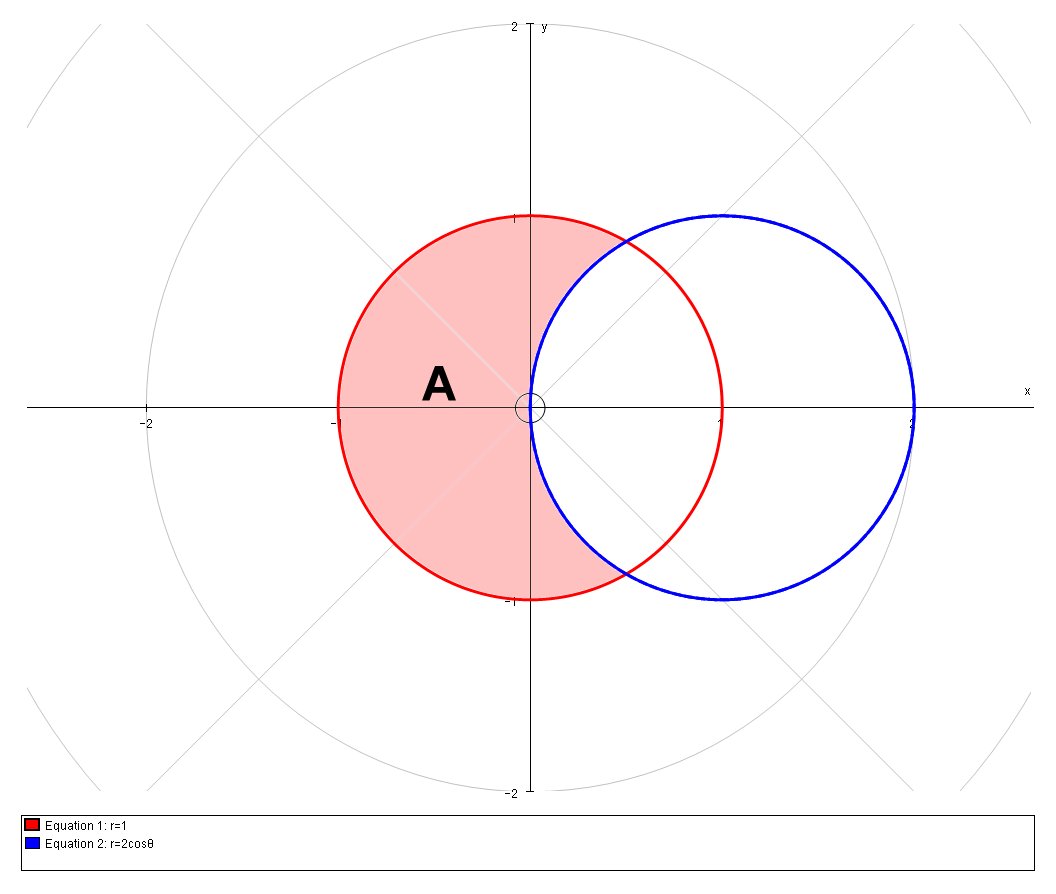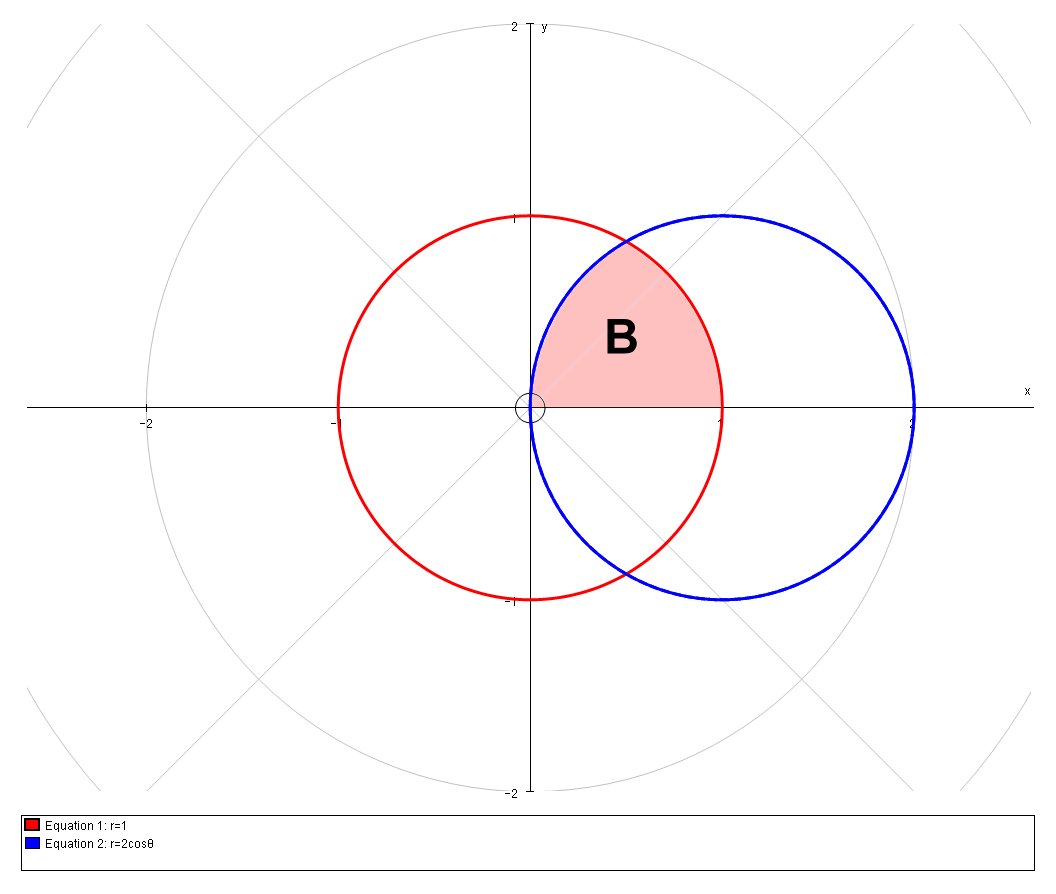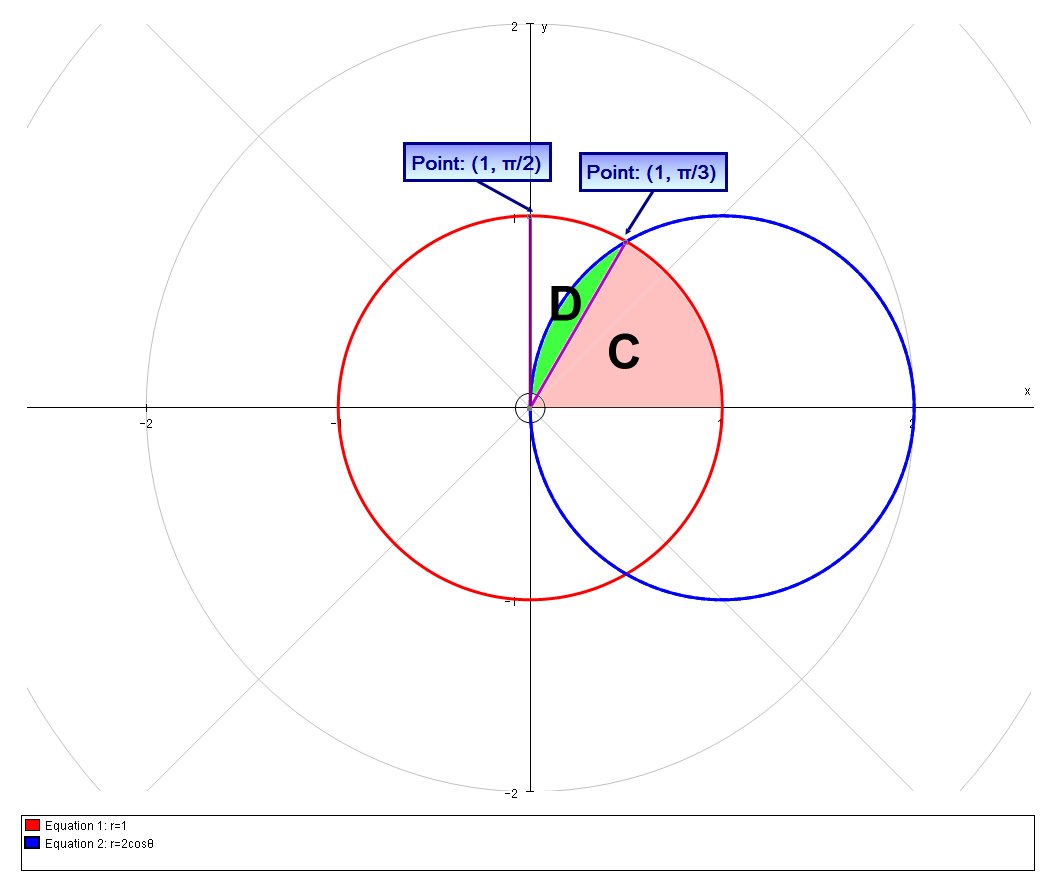What is the area inside the polar curve #r=1#, but outside the polar curve #r=2costheta#?
1 Answer
# A = pi/3 + sqrt(3)/2 ~~ 1.9132 #
Explanation:
Here is the graph of the two curves. The shaded area,

This is a symmetrical problems so we only need find the shaded area,

We can find the polar coordinate of the point of intersection in Q1 by simultaneously solving the polar equations:
# r=2cos theta #
# r=1 #
From which we get:
# 2cos theta = 1 =>cos theta = 1/2#
# :. theta = pi/3 #

So we can easily calculate the area,
The area,
# A_C = 1/2 * 1 * pi/3 #
# \ \ \ \ \ = pi/6 #
And we calculate the area of the segment
# A = int \ 1/2r^2 \ d theta#
Thus:
# A_D = int_(pi/3)^(pi/2) \ 1/2(2costheta)^2 \ d theta#
# \ \ \ \ \ = int_(pi/3)^(pi/2) \ 1/2 \ 4cos^2 theta \ d theta#
# \ \ \ \ \ = 2int_(pi/3)^(pi/2) \ cos^2 theta \ d theta#
# \ \ \ \ \ = 2int_(pi/3)^(pi/2) \ 1/2(cos2theta+1) \ d theta#
# \ \ \ \ \ = int_(pi/3)^(pi/2) \ cos2theta+1 \ d theta#
# \ \ \ \ \ = [1/2sin2theta + theta]_(pi/3)^(pi/2)#
# \ \ \ \ \ = (1/2sin(pi)+pi/2) - (1/2sin((2pi)/3)+pi/3)#
# \ \ \ \ \ = (0+pi/2) - (1/2 sqrt(3)/2+pi/3)#
# \ \ \ \ \ = pi/2 - sqrt(3)/4-pi/3#
# \ \ \ \ \ = pi/6 - sqrt(3)/4#
So then the total area we require, is given by:
# A_A = pi(1)^2 - 2(A_C+A_D) #
# \ \ \ \ \ = pi - 2(pi/6 + pi/6 - sqrt(3)/4) #
# \ \ \ \ \ = pi - 2(pi/3 - sqrt(3)/4) #
# \ \ \ \ \ = pi - (2pi)/3 + (2sqrt(3))/4 #
# \ \ \ \ \ = pi/3 + sqrt(3)/2 #

